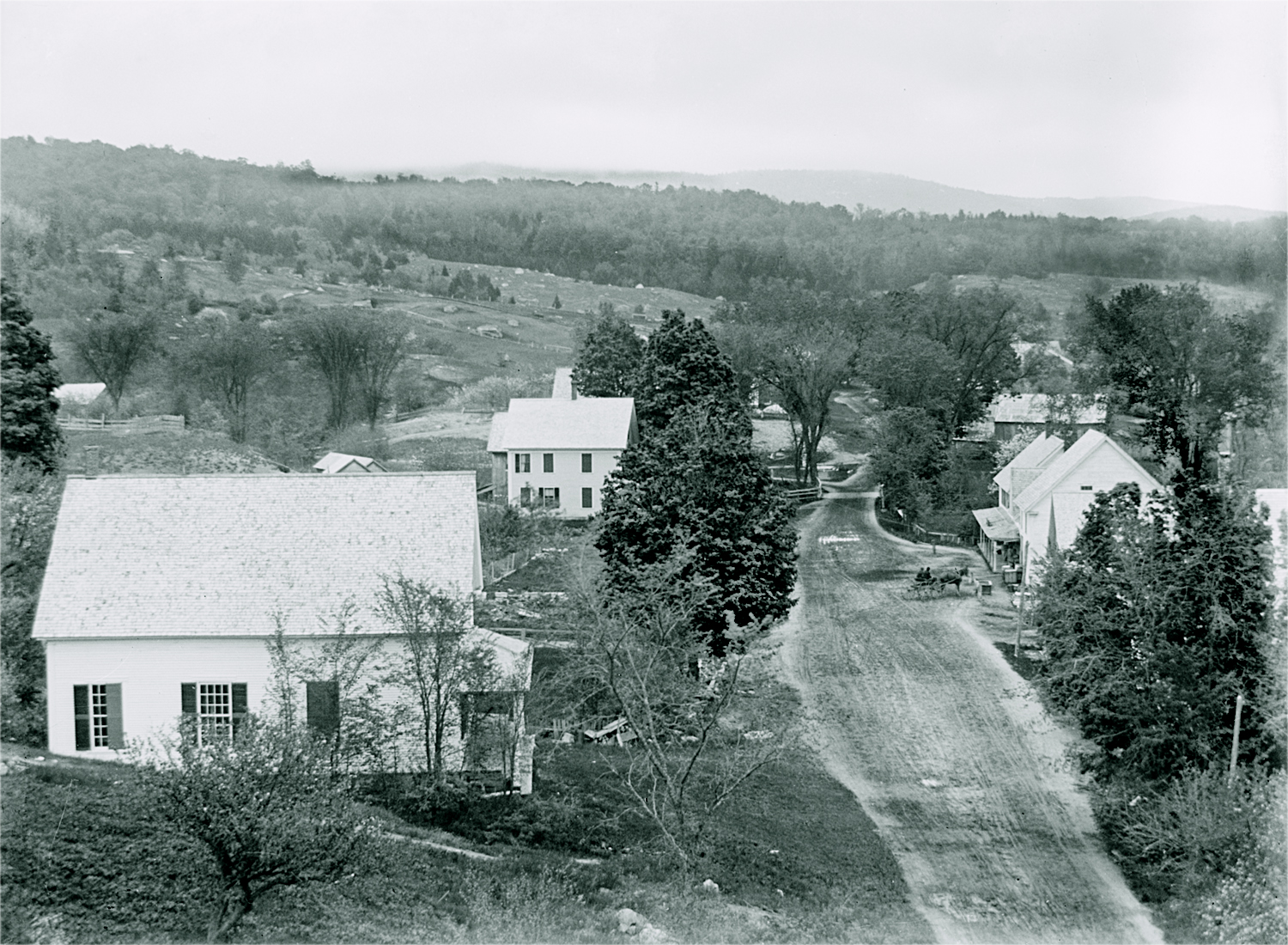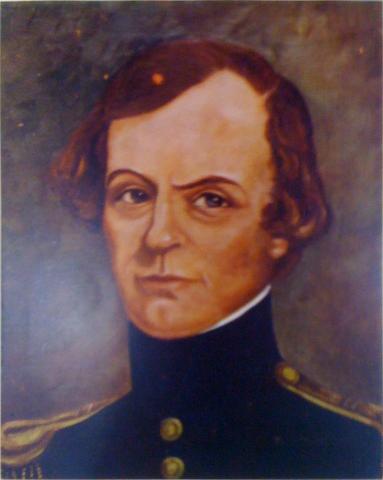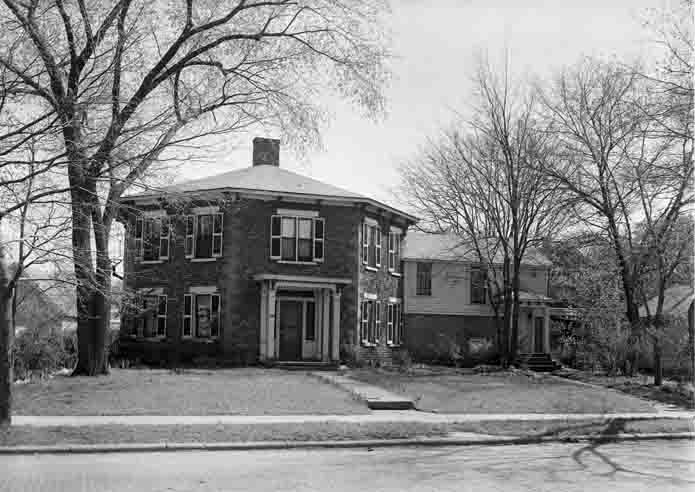The Life of Capt. John Gunnison
by Shirley M. De Boer, Grand Rapids Historical Commission
published: May 12th, 2012
In 1841, Lieut. John Gunnison, U.S. Army Corps of Topographical Engineers was put in charge of Great Lakes Surveys. Three years later he invested his savings and his wife’s dowry in Kent County land. In an 1846 letter to his wife John said, “I am now pondering on another project—it is a cranberry plantation.” Subsequently he purchased the entire SE quarter of section 26 in Walker Township with its boggy marshland. On his higher ground, he had an octagonal house built. Gunnison’s name is dotted throughout the United States and especially in the American West. In 1853 he was despicably massacred leaving his wife, three children, a large extended family and many friends, including those in Grand Rapids, to mourn his loss. This is the story of a promising young West Point cadet, a competent and upright man, who served his country well.
Numerous place names from a bend to a National Forest, and a mountain peak to a valley, honor and affirm Gunnison’s memory. Our city’s relics of the past Gunnison Swamp and also Gunnison Place, the site of his impressive octagonal house, have disappeared, but not Gunnison Street and the memory of his family and their presence here. At home in Grand Rapids as often as possible, John was highly esteemed by its residents–his friends and neighbors–among them John Ball. He was baptized 19 April 1846 at St. Mark’s Episcopal Church, the family’s place of worship. Town residents enjoyed hearing him speak at the public hall, the Grand Rapids Lyceum of Natural History, which became our public museum.
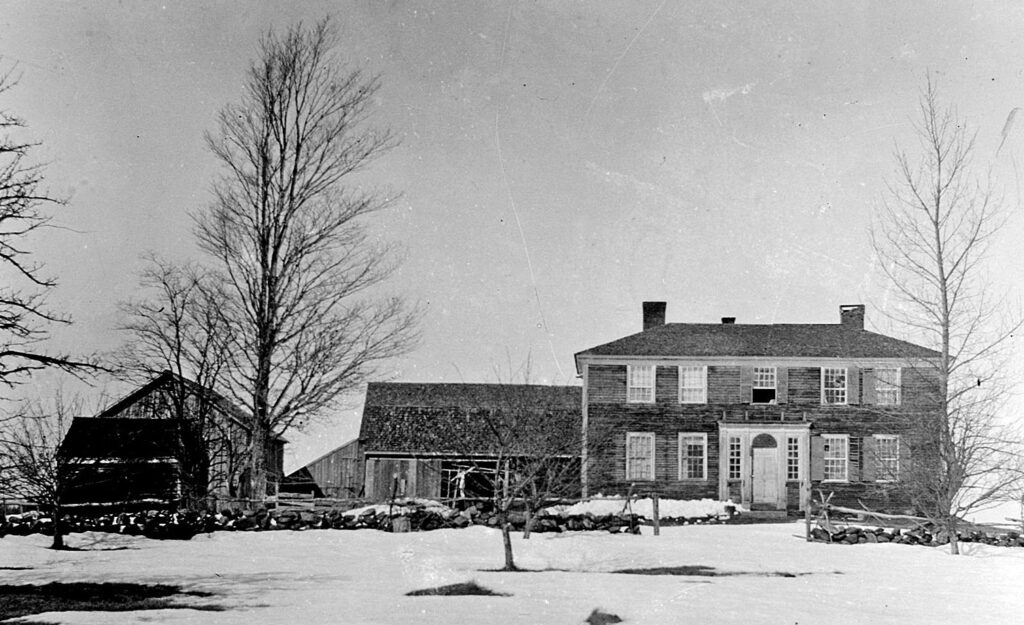
Restoration commenced in 2010 on the large, red boyhood home in Goshen, New Hampshire where John Williams Gunnison was born to Samuel Gunnison and Elizabeth Williams on 11 November 1812. He walked to the district school over the Sunapee Mountains and helped on the farm until 1830. Then he traveled about thirty-five miles to Hopkinton Academy where he studied, among other subjects, Latin, Greek and chemistry for the next three years. At times he taught school. Meanwhile, he applied for entrance to West Point Academy and was accepted for the 1833 fall term. Before he left home for New York, he planted a Balm of Gilead sapling, jokingly telling his mother, “This will be a symbol of my life.”
A West Point Cadet, John wrote to his parents and rehearsed his life principle that he “wished to accomplish the greatest amount of good in the least possible time.” John H. Forster, who later worked under his command, described Gunnison: “Tall in stature, slim and active; he was talented, energetic and enterprising. He delighted to act as pioneer, to lead the party in his shirt sleeves, with an axe, cutting down trees and clearing the underbrush. He was brave, generous and considerate in trouble and sickness. He asked no one to go where he would not lead; he was always pleasant and cheerful, thoroughly practical and sensible, without any trace of the martinet in his manners.”
In 1835 he wrote, “The greatest misfortune I have met with is weak eyes…I have perhaps brought this upon myself. In addition to studies I have averaged nearly one thousand pages a week of extra reading for some time.” Graduating second out of fifty in his 1837 class, he accepted the position of 2nd Lieutenant, saying, “…as a matter of duty, [he felt] that the interests of individuals should yield to the interest of their country.” He served in the Florida War through 1838 when he was transferred to the Corps of Topographical Engineers to improve rivers in Georgia. Before proceeding to the Great Lakes, the news sent home announced, “I have determined to marry, before leaving for the North, if circumstances admit.”
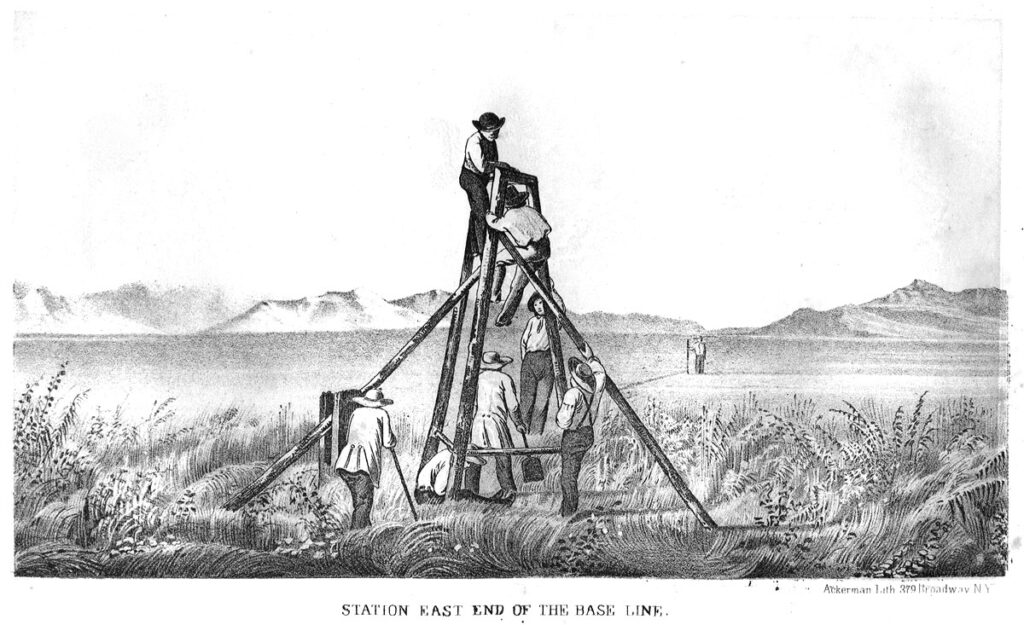
On 15 April 1841 John married Martha, the love of his life, daughter of Robert and Maria (Baird) Delony. Then on he went with his bride to Michigan to conduct a standard survey of the unexplored Wisconsin-Michigan border. Using Indian boat crews, he surveyed and charted Michigan’s entire west coast. Charles Belknap relates the following, “Mrs. Gunnison whenever possible shared her husband’s out-of-door life; was his companion and often his assistant in the field and with office work. Her husband called her the garrison bugle, for she whistled the calls and he responded with three clear notes–‘de-lo-ney.’ The Indians took this up and called her the de-lo-na, or sometimes the bird woman. Grand Rapids neighbors were always interested in the Georgia girl and her soft southern speech.”
Surveys of the Northwestern Lakes continued intermittently until 1853, but in April 1849 John received orders to start immediately for St. Louis, Missouri to join Captain Howard Stansbury. They were to explore a route to the Mormon settlement in Utah Territory to survey and chart the valley of the Great Salt Lake. During the winter in Salt Lake City John befriended the people, studied their religious beliefs, and later wrote a book entitled the History of the Mormons. It was seven months later that he saw his family again in Grand Rapids. In April, 1851 John visited his parents in New Hampshire–he had not seen them for nine years–and this would be his last visit.
Promoted to captain and put in charge of the Central Pacific Railroad survey, Gunnison was to compress into the shortest amount of time his greatest achievement. During the survey, his party worked tirelessly, sometimes cutting through solid rock and at other times clearing thick timber. Nearly finished he said, “…the great mountains have been passed and a new wagon road opened across the continent for emigrants; a road for nearly 700 miles has been made over an unbroken track … through a wilderness and across five mountain ranges and a dry desert of seventy miles…and this in two and a half months.” The most difficult part of the job was finished; it remained to survey the Sevier River and Lake. To accomplish the two tasks, he divided his party.
On the morning of 26 October 1853 Gunnison’s small encampment near the Sevier River was viciously attacked. The Captain stepped from his tent with raised hands to indicate friendliness, but was struck by thirteen or more arrows. Eight men, including Gunnison, were killed, brutally mutilated and left to the wolves. Four men escaped on horseback. Though the government attributed the massacre to Pavante Indians, the Gunnison family believed that the assailants included Mormons disguised as Indians. Gunnison’s grieving wife was beside herself knowing that an Indian had obtained one of her husband’s hands and was wearing it on his person. When the news reached John’ parents the sorrowful mother, Elizabeth Gunnison, recalled that at about that same date a severe autumn windstorm had broken the top out of a nearby Balm of Gilead tree.
Painted Wall of the Black Canyon endures as does the memory of the Gunnison family’s presence in Grand Rapids. Their son Delony lived in Grand Rapids for a short adult life, daughter Maria became a portrait artist in New York City and Elizabeth, affectionately called Bessie by her father, married Dunbar O’Neil in Grand Rapids in 1870 and had six known children. John Gunnison discovered the headwaters of the river which bears his name and since 1909 four hundred miles of lateral canals provide water for 200,000 acres of arid land in Southwestern Colorado making it a habitable and fruitful land. Gunnison’s achievement did not cease. A Balm of Gilead tree, regardless when planted, remains a symbol of his life broken early
Young, Chief of the Bureau of Indian Affairs for the Utah Territory, later arrested Indians who he claimed had allegedly perpetrated the Gunnison massacre, but eventually let all of them off without any real punishment. It is claimed that Young allegedly cut a deal with the Indians by compensating them in exchange for shifting the blame of the attack to them.
Historian Brigham D. Madsen, wrote, in the Utah History Encyclopedia, “Despite cries of outrage by some easterners that the Mormons had instigated the attack, Lieutenant Beckwith [Gunnison’s assistant commander] concluded, as a result of his investigation, that the Mormons were not involved and that the Pahvant Indians had acted in revenge for an earlier attack upon their people by a party of white emigrants.”
The Gunnison Massacre resulted in much controversy and added additional strain to the relationship between Governor Brigham Young of the Utah Territory and the Federal Government. These events eventually culminated in the Utah War wherein President Buchanan sent the U.S. Army to the Utah Territory in order to stop a reported Mormon insurrection.
Legacy
Gunnison’s activities were honored when the city of Gunnison, Utah was later named for him. The Gunnison House in Goshen NH is on the National Register of Historic Places, and Gunnison Lake was named after him.

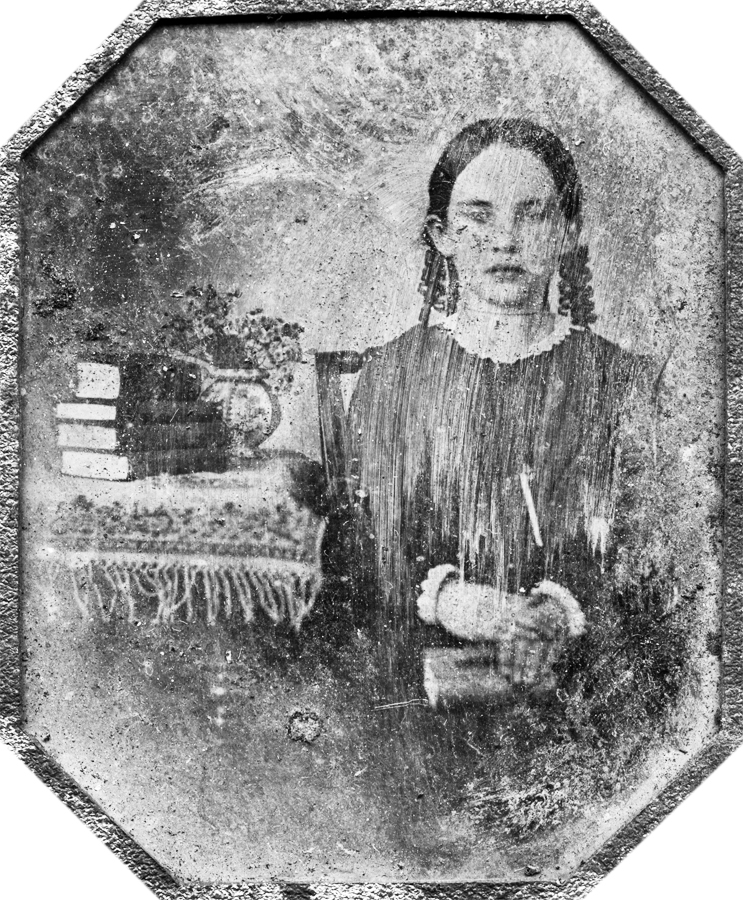
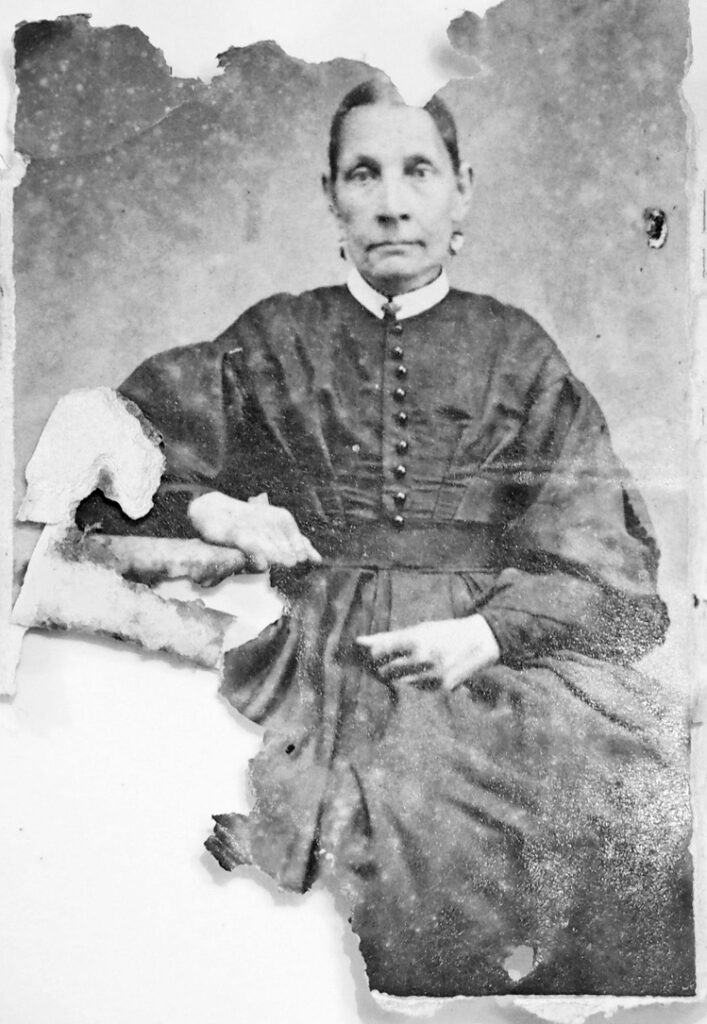
John Gunnison’s History – a Second Perspective
Gunnison was born in Goshen, New Hampshire in 1812. He graduated from West Point in 1837, second in his class of fifty cadets. His military career began in Florida, where he spent a year in the campaign against the Seminoles. Due to his poor health he was reassigned to the Corps of Topographical Engineers. Initially he explored unknown areas of Florida, searching for provision routes. However, his health soon forced him out of Florida entirely.
From 1841-1849 Gunnison explored the area around the Great Lakes. He surveyed the border between Wisconsin and Michigan, the Western coast of Lake Michigan, and the coast of Lake Erie. On May 9, 1846 he was promoted to First Lieutenant.
Howard Stansbury Expedition
In the Spring of 1849 Gunnison was assigned as second in command of the Howard Stansbury Expedition to explore and survey the Valley of the Great Salt Lake. That winter was particularly heavy and the expedition was unable to leave the valley. Gunnison took the opportunity to befriend some Mormons and study The Church of Jesus Christ of Latter-day Saints (Mormon church). When he finally returned to Washington, DC, he wrote a book titled The Mormons or Latter-Day Saints, in the Valley of the Great Salt Lake: A History of Their Rise and Progress, Peculiar Doctrines, Present Condition.
Gunnison returned to the Great Lakes from 1852-1853, mapping the Green Bay area, and was promoted to Captain on March 3, 1853.
Gunnison – Beckwith Expedition
On May 3, 1853 he received orders to take charge of an expedition to survey a route for a Pacific railroad between the 38th and 39th parallels. The surveying party left St. Louis, Missouri in June 1853 and arrived by mid October in Manti, Utah Territory. In Utah Territory, with Lieutenant E. G. Beckwith as assistant commander, Gunnison began the survey of a possible route, surveying areas across the Rocky Mountains via the Herfano River, through Cochetopa Pass, and by way of the present Gunnison and Green rivers to the Sevier River. His journey took him through the Tomichi Valley in Colorado, where the town of Gunnison is named in his honor. After crossing the Tomichi Valley, the survey team encountered the Black Canyon, carved by the Gunnison River which was also named in his honor. The team was forced to turn South to get around the canyon.
Attack and Massacre
The weather was beginning to turn “cold and raw” with snow flurries and Captain Gunnison sought to speed up mapping before returning to winter quarters. At Lake Sevier, the team was divided into two detachments. On the morning of October 26, 1853, Gunnison and the eleven men in his party were attacked by a band of Pahvants (Ute.) In the resulting massacre, Gunnison and seven of his men were killed. Several survivors of the attack alerted the other detachment of the survey team who rode to aid Gunnison and his party. An additional survivor of the attack and the bodies of the victims were retrieved later that day. The remains of the eight dead were found in a mutilated state. Killed with Gunnison were Richard H. Kern (topographer and artist), F. Creuzfeldt (botanist), William Potter (guide), Private Caulfield, Private Liptoote, Private Mehreens, and John Bellows (camp roustabout.)
Investigations and allegations
Allegedly, Gunnison was warned by Mormons that local bands of Pahvant Utes might not be very sympathetic to his presence due to an ongoing conflict, known as the Walker War, with Utah Chief Walkara. At the time of the killings, rumors circulated that the Pahvants involved in the massacre were acting under the direction of Brigham Young and the secret militia known as Danites. Leaders of The Church of Jesus Christ of Latter-day Saints were initially concerned that the railway would increase the influx of non-Mormon settlers and non-Mormon economic concerns into the territory. Subsequently, however, Mormon leaders organized cadres of Mormon workers to build the railway, welcoming the income for the economically depressed settlers.
Martha Gunnison, widow of Captain Gunnison, maintained that the attack was planned and orchestrated by militant Mormons, under the direction of Brigham Young. Gunnison’s letters to his wife throughout the expedition left her with the impression that “the Mormons were the directors of my husband’s murder.” She wrote to Associate Justice W.W. Drummond, the 1855 federal appointee to the Supreme Court of the Territory of Utah. She received confirmation of this belief in his response to her letter. Drummond drew this conclusion from informant and witness testimonies in several trials after the murders. He cited numerous reports by whites and natives of white attackers dressed up as Indians during the massacre.
John Williams Gunnison Letters
(Authentic copies of letters written by John Williams Gunnison. Typed by his grand-daughter Genevieve Delany O’Neill. Written in 1832.)
Letter #1
A few words to my respected Mother
With the business of the day, which is pure vexation to the mind, when the evening is far spent with its imperious duties — when these are past and when the busy wheels of time are fast approaching midnight, what, then, at such a time and under such circumstances can you expect from my pen. When, then, the stillness of the night reminds me (click here to continue)
